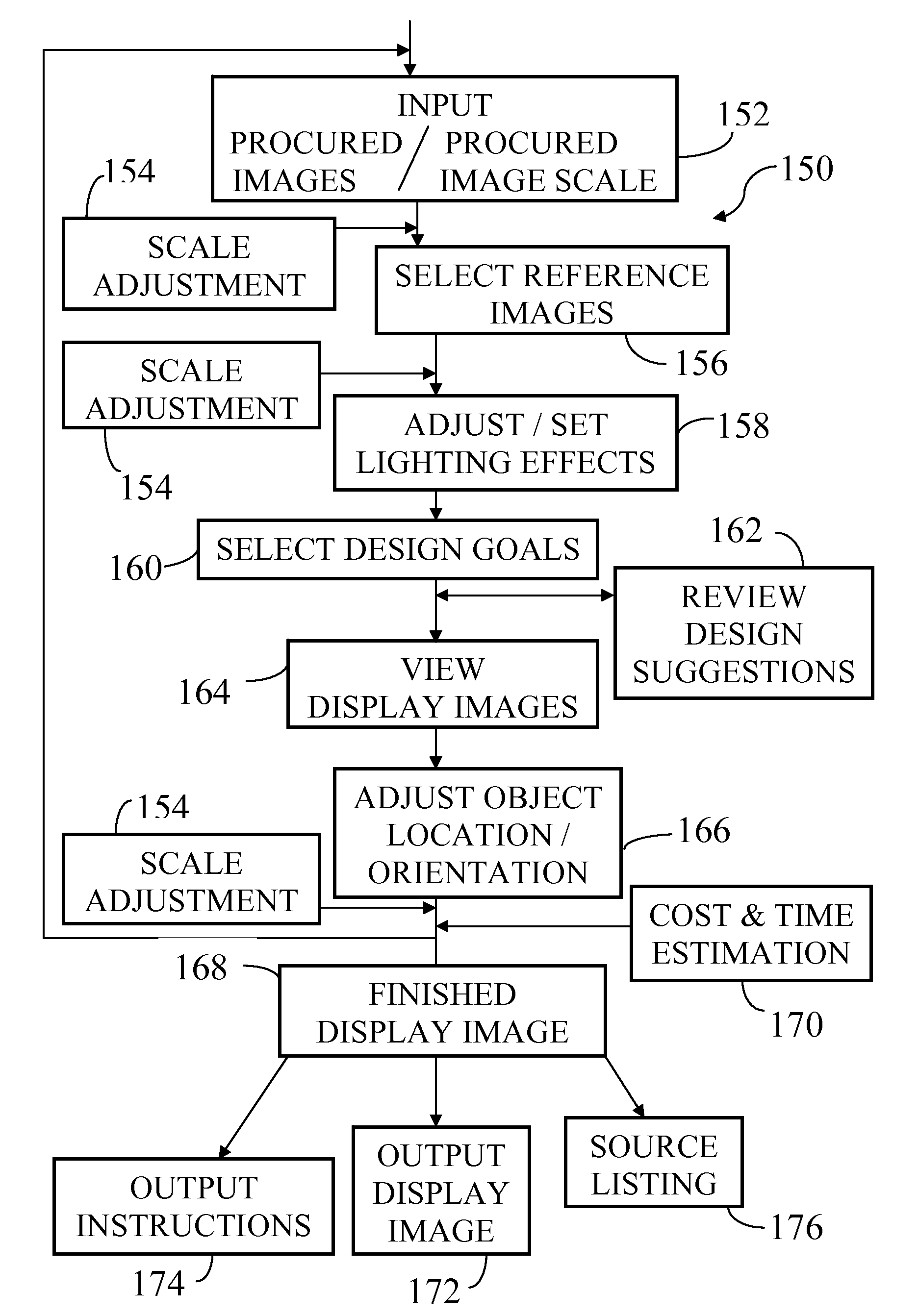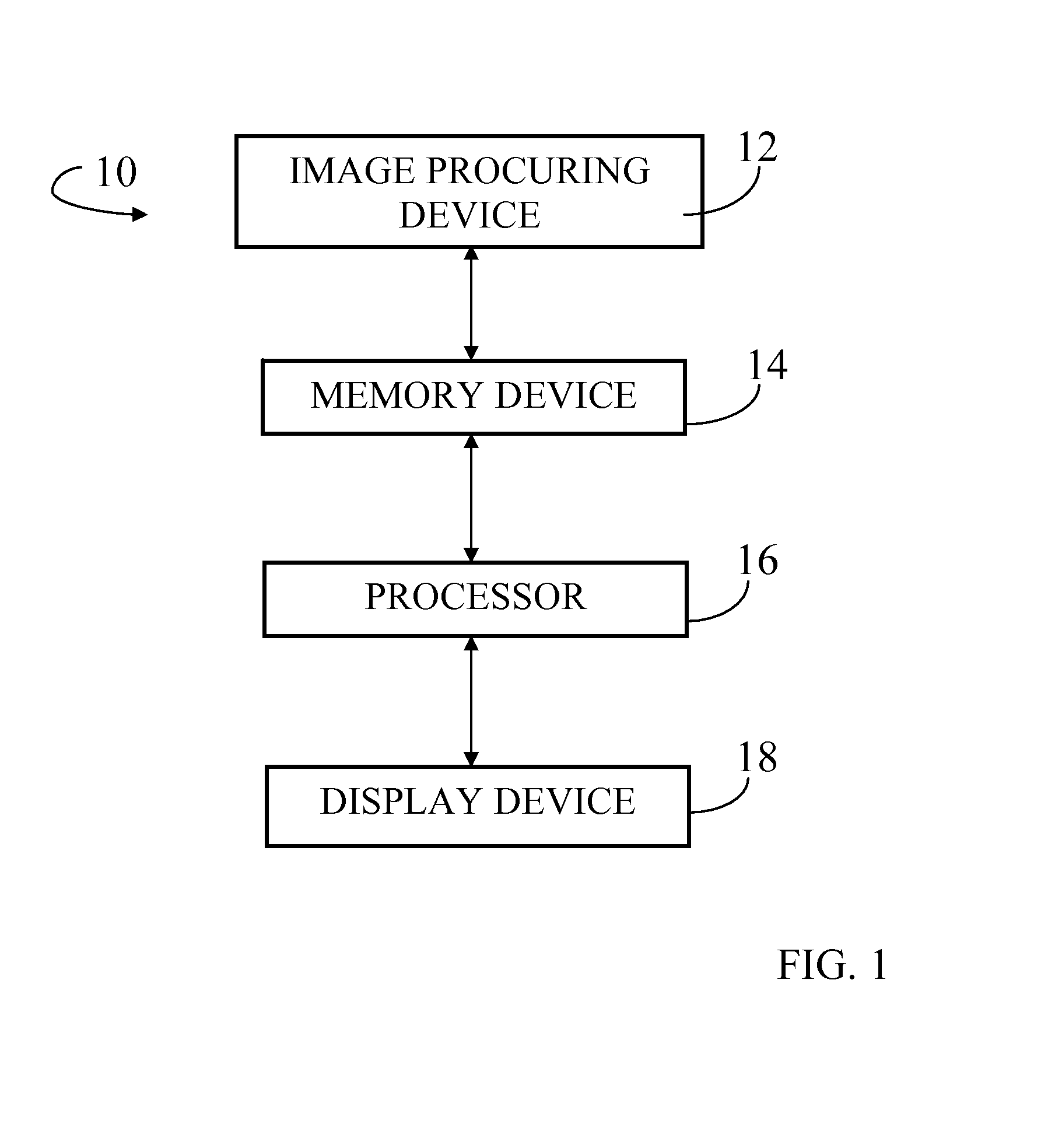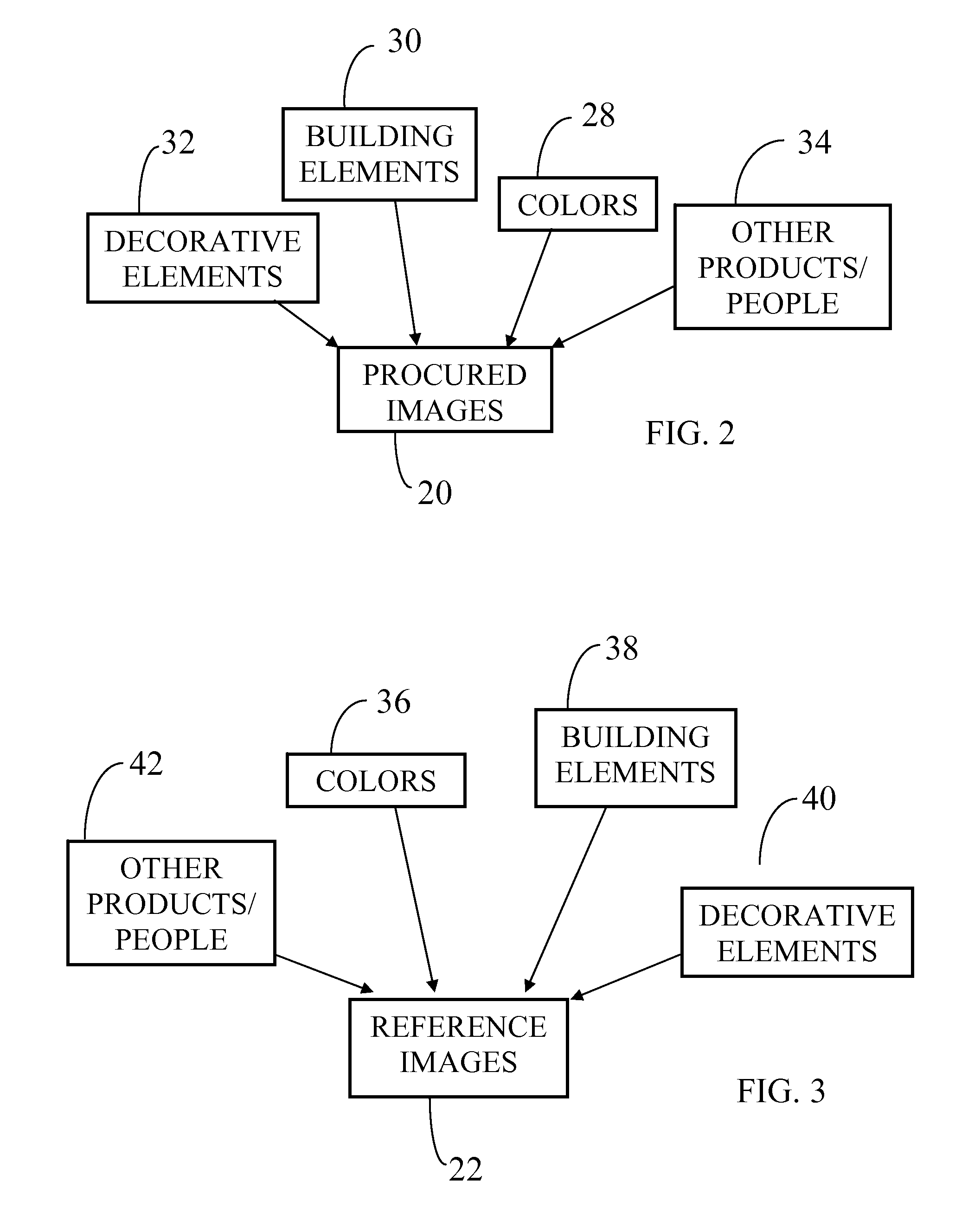Interior decorators, even those with exceptional taste, commonly are challenged to provide a room interior that is both pleasant to behold and occupy while simultaneously remaining functional.
However, it is unlikely that a
magazine design will optimize the individual desires of a
consumer wishing to decorate a room.
Furthermore, the
consumer's room is unlikely to match physically the
layout of the
magazine room, and the depicted room certainly will not provide for any special furniture or accessories that a user wants to include or already owns.
Still further, a
magazine would not be likely to provide coordinated designs for the other rooms of the
consumer's home.
A good interior designer is usually able to narrow down the range of samples that must be viewed, but such a designer is likely to be expensive.
If the consumer attempts to save money by making his or her own selections, the process is apt to be arduous,
time consuming and frustrating.
Unfortunately, it is almost impossible to project precisely from a tiny sample or color swatch what that color or sample will look like on a full size wall—a problem that creates frequent and unpleasant surprises that are difficult and expensive to rectify.
While most people have sensitive
color vision and can recognize slight color variations when the colors are placed side by side, the vast majority of people have
extremely poor color memories.
Finally, aside from the integration and coordination problem, few people have the ability even to select colors that please them when applied in their environments let alone the knowledge to use color dynamically to achieve its full potential.
As a result, it often becomes painfully apparent that colors and objects thought to compliment each other or work well together in a designer's mind clash or otherwise fail to attractively integrate or have the appearance desired or predicted by the designer when applied in an actual environment.
The psychological
impact of the colors chosen can be equally unpredictable, can fall far afield of what had been hoped for, and frequently can be ghastly.
Colors one can presume the designer thought would compliment each other or work well together become glaring evidence of the difficulty of predicting the actual appearance of colors on a wall or a building structure.
Unfortunately, although the color white certainly can be useful and attractive in many instances, employing the color white as a default color leads to its overuse and an overall blandness of the many home and building exteriors and interiors that use it as a
safety net.
Indeed, the vast majority of home and building owners and users resign themselves, due to the time, aggravation and expense of another potentially fruitless experiment, to live with a less than optimal environment.
Disadvantageously, in these prior art systems, there is generally no guarantee that the spectral results will be accurate.
Because the color characteristics of the input and output devices are not identical, original colors are not exactly reproduced even on the same type of paper.
Similarly, when the digitized image is outputted on a sheet of paper, certain color output is distorted during printing.
Although prior art methods and systems have improved the
color management involving a display monitor,
color matching, such as between a paper medium and a
CRT display, typically did not take ambient light condition into consideration.
However, traditional CAD programs have not allowed a user to utilize accurate color digitized photographic images of the user's actual home,
yard, interior room, office or industrial space as a fixed composition background against which it is possible to manipulate digitized photographic images of building,
home improvement and
landscaping products from real manufacturers to create an accurate, realistic photographic rendering of the products in actual individualized use.
The system disclosed in the '666 patent does not, however, provide for
access to information about the image elements from a
database by means of linking the information with the images of the products as they are manipulated or moved over the
background image of the actual environment.
Further, the '666 patent does not provide for
access to information related to the image elements placed over or merged with a background by means of an interface associated with a computer generated screen display.
Yet further, the system in the '666 patent lacks the ability to manipulate image objects (e.g., object resizing, distorting, edge
smoothing, etc.) of actual products (in the form of digital images) over the
background image.
Notably, however, it appears that the '670 patent fails to address fully the realities of different types of lighting.
The '670 system also is deficient in that it fails to allow automatic scaling such that it will yield out-of-scale placement of objects in a given environment.
This is certainly disadvantageous when one is seeking a realistic prediction of the future appearance of a room, structure, space, or the like.
With this, a couch that can be manipulated to be part of a given image will in all likelihood not be in a realistic scale such that it may not in reality fit in a given room or space.
However, the patent further notes that most of such
computer imaging has not been overly concerned with color fidelity such that the displayed image can be useless for its intended purpose.
The fact of the matter is that errors in the displayed image color have several potential causes.
Either the
display device or the image procuring device may be incorrectly calibrated to portray color accurately.
Additionally, color imperfections can be caused by the inherent limitations of either the image procuring device or the display device.
However, the
reproduction of a color rarely exactly follows theory.
First, measurement devices typically are unable to measure light exactly at a number of precise wavelengths.
Second, the light sources used for
color reproduction (in these cases, phosphors) rarely precisely match the measured wavelengths.
This introduces additional color errors into the
reproduction process.
Third, surface characteristics such as shine or texture often influence the apparent color of an object.
Although the abovedescribed developments have undeniably cooperated usefully to establish the present state of the art, there remain a number of deficiencies in the art that leave a cognizable need for further development.
As the foregoing discussion makes clear, light is a complex phenomenon, and the computer display systems of the prior art have struggled to display color in an accurate and consistent manner.
Consequently, although many prior art disclosures allow a user to perceive on a display screen the
general appearance of proposed modifications to an interior or exterior of a building structure, these displays are deficient.
Among the aspects that prior art has failed to account for properly is the complexity of light.
However, these prior art systems have heretofore not been able to demonstrate the effects of light in its true complexity.
For this and further reasons, accurate appearance and color rendition have been compromised.
 Login to View More
Login to View More  Login to View More
Login to View More 


